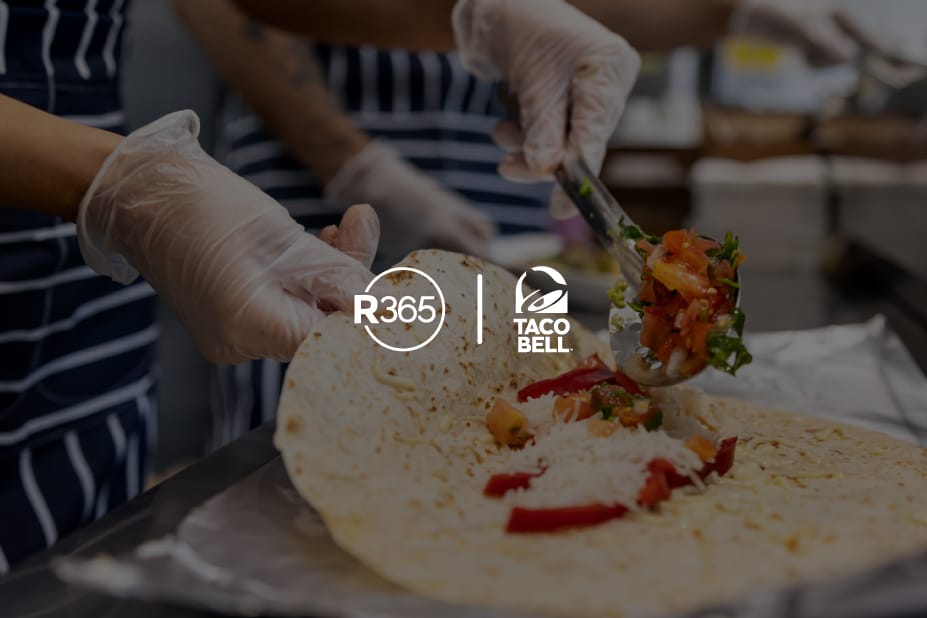Restaurant labor cost is an industry-wide challenge and, alongside food cost, is your greatest expense. At the same time, labor is also your most controllable cost. To increase your restaurant profitability, you have to understand your restaurant labor cost, and that all starts with having up-to-date sales and labor data that will allow you to review, track, and adjust your labor costs.
However, industry-wide challenges with high employee turnover and the high cost of labor requires that you strike a balance between retaining employees and controlling your labor costs.
According to the Bureau of Labor Statistics, the staff turnover rate in the restaurant industry is at an all-time high of 75 percent, meaning that almost three quarters of employees are unlikely to stay for a whole year. In addition, according to the 2019 Restaurant Success Report, 31 percent of restaurant professionals ranked retaining staff as a top challenge.
But with restaurant labor costs increasing, due to higher minimum wages, and increased competition for workers, labor can start to eat into your restaurant margins. Tracking your labor daily can help you actively manage your labor costs relative to your sales – helping you lessen the impact of higher wage costs.
Integrating accounting, point-of-sale (POS) and payroll enables you to seamlessly transfer data between systems, keep tabs on labor costs, and streamline processes. Ideally, all are cloud-based systems that allow you to access your data anytime and from anywhere online.
“By integrating our POS, scheduling, accounting, and payroll systems, we have reduced labor hours tremendously from a support perspective, and there’s now an overall ease when it comes to transactions related to payroll. It’s made everything more seamless, and it keeps our workforce engaged and small — our entire team across accounting, operations, HR, and marketing consists of only 8 people. Those eight people support 13 operations, 400 team members, and a ballpark $25 million in sales,” stated Ryan Egozi, Director of Operations at SuViche Hospitality Group.
Integration with POS for sales and labor data

A cloud-based POS system that integrates effortlessly with your accounting system centralizes your daily sales and restaurant labor data. Your accounting system directly pulls detailed data from your POS system, including sales tickets, tenders, payment types, and clock-in/clock-out by job and employee. This eliminates human error from manual data transfer. Additionally, advanced restaurant accounting software integrated with your POS system can automatically create daily sales and labor accrual journal entries for your accounting general ledger, allowing you to instantly review labor details and make immediate staffing decisions.
Keeping track of your sales and restaurant labor data daily empowers you to make immediate, data-driven decisions if you see anomalies in your numbers. Equipped with daily labor costs through integration with your POS system, you can see if you’ve exceeded your benchmarks and make adjustments accordingly. If you’re using legacy accounting systems that do not integrate with your POS system, these daily reports are impossible, or at best, extremely burdensome.
If you’re only reviewing labor costs on a monthly basis, and you discover that you didn’t meet your labor cost benchmarks, that can add up significantly over a month’s time. Letting a few hours of payroll slip through the cracks once may not have a major impact, but consistently paying more than necessary in hourly wages for an entire month could severely affect your bottom line.
“Not to overly simplify the benefits, but what we essentially gain from system integration is efficiency, time and accuracy. Changes are so much faster, mistakes are caught daily instead of weekly or monthly, adjustments are made hourly rather than weekly, the true benefit is being able to work with and maintain a very small but capable support team,” noted SuViche’s Egozi.
Restaurant labor cost as a percentage of total volume of sales
One of the most important metrics to measure is not just the cost of labor, but the labor cost as a percentage of total volume of sales – an easy metric to track when your accounting system is integrated with your POS system. Using restaurant accounting software that allows you to track how your labor compares to your labor percentage goals on a daily basis can show you where to adjust employee scheduling based on business trends. This can allow you to pinpoint employees clocking in or out of their schedule time, allowing you to place controls with your restaurant management software to curb excessive labor costs or overtime.
Using labor data for scheduling
Integrating your POS system with your accounting and scheduling solution also helps you use labor data for forecasting. With a daily payroll accrual, you can compare your scheduled labor to your actual numbers. This up-to-date information, all stored and analyzed in one place, can help you spot and react to labor issues, and address them proactively.
Streamlined labor scheduling tools, based on forecasting, can help you make sure your labor is running as efficiently as the rest of your restaurant. Based on daily sales trends between this year and last year, you can use your forecasted numbers to create employee schedules that optimize labor spend. You can schedule different functional areas of the restaurant separately with individual labor goals and metrics, as well as set labor goals and monitor the impact of each shift.
Technology tools such as cloud-based restaurant scheduling software, with features like suggested schedules based on up-to-date data or sales-per-labor-hour percentage goals, can save time and money. Mobile apps also have the potential to boost employee engagement, functioning as a single point of contact for shift requests, availability, or company-wide messaging. Your employees will appreciate having more flexibility and control over their work schedule, so it could save you from the expenses associated with high turnover.
In addition to allowing you to review and adjust labor costs on a daily basis, a restaurant accounting software scheduling function that restricts employees from clocking in/clocking out outside of their scheduled time helps to control these excess labor costs. Running a daily punch detail report will help your managers stay informed on the labor data from your POS system compared to the hours scheduled.
This allows the restaurant manager to make scheduling changes based on this immediate feedback to improve your labor percentage starting today, rather than a week or month from now. Your restaurant accounting system should also allow you to enter your sales per labor hour (SPLH) goals and suggest the number of hours you should be scheduling.
Integration with your payroll provider

If your POS system, accounting system, and payroll provider are integrated, then comprehensive labor data is pushed from your POS to payroll, saving you the time and hassle of manually passing information to and from your payroll processor.
The integration automatically creates journal entries that summarize the expense accounts on your general ledger (i.e., FOH, BOH, manager, etc.). With auto-created labor accrual journal entries created from the POS import each day of the pay period, you see true labor costs and the impact on your P&L. You can then capture the actual payroll expenses and use your accounting software’s bank reconciliation feature to reconcile the payroll account.
With integration from your accounting software to your POS system and payroll provider, you get easy access to analytics, budgets, financial and sales, scheduling, and labor reporting in one dashboard.
“Before integrating our POS, scheduling, accounting, and payroll systems, we faced challenges with data. The big challenge was combining all of this disparate information coming from different systems and using it properly. Without integrated systems, you’re exhausted trying to combine and make sense of the data, and there are many potential errors or variables that can invalidate the data you’ve worked so hard to aggregate, format, and match,” said SuViche’s Egozi.
Summary
SuViche Hospitality Group ( featured above) is a Restaurant365 customer. By integrating your accounting, restaurant scheduling software, and payroll platform with your POS system, all data is accessible in one place, allowing all stakeholders simultaneous access to up-to-date information and enabling data-driven action to reduce labor costs. Integrating these systems also streamlines operational processes and eliminates errors from manual data transfer.
With the scheduling as part of the Restaurant365 all-in-one, restaurant management solution, you can create schedules more quickly and reduce labor costs. Restaurant365 is a restaurant management system incorporating financial reporting, operational reporting, restaurant accounting, restaurant operations, inventory management, payroll + HR, and scheduling into a cloud-based platform that’s fully integrated with your POS system, as well as to your food and beverage vendors, and bank. If you’d like to learn more about Restaurant365, fill out the form below to request a demo.




